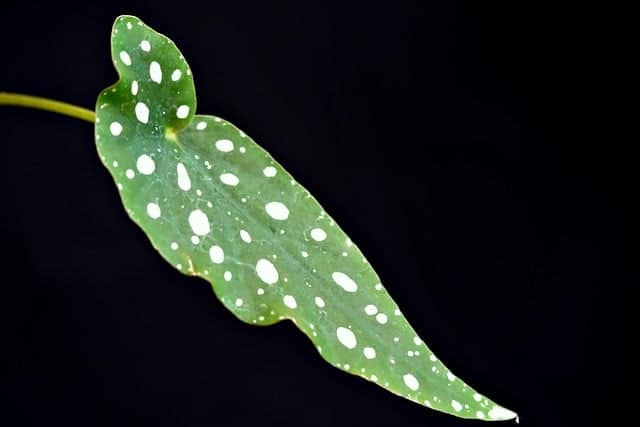Begonias are a popular houseplant choice because of their colorful flowers and attractive foliage. However, white spots on begonia leaves can be a common issue that can detract from their beauty. These white spots can be caused by a variety of factors, including fungal infections, pests, and improper care.
Identifying the cause of Begonia white spots on leaves is crucial to finding the right treatment. Some common causes of white spots on begonia leaves include powdery mildew, mealybugs, excessive fertilization, and low light conditions. While these issues can be avoided with proper care, it’s important to know how to identify and treat them if they do occur.
Key Takeaways:
- White spots on begonia leaves can be caused by fungal infections, pests, or improper care.
- Identifying the cause of white spots is crucial to finding the right treatment.
- Proper care, including avoiding over-fertilization and providing adequate light, can help prevent white spots on begonia leaves.
Also see these other top posts:
Identifying White Spots on Begonia Leaves
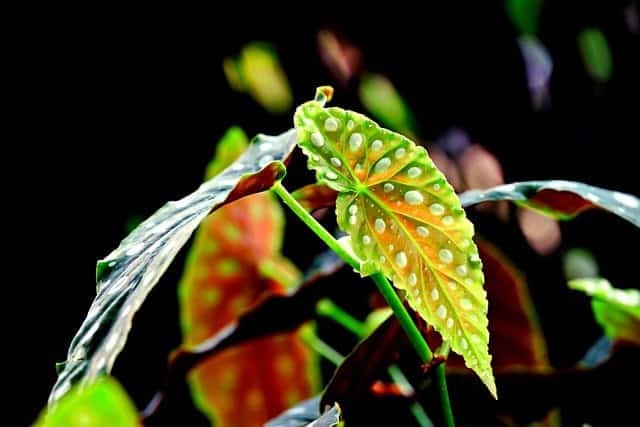
Begonias are popular houseplants known for their beautiful foliage and vibrant blooms. However, sometimes they can develop white spots on their leaves, which can be unsightly and concerning to plant owners.
White spots on begonia leaves can be caused by various factors, including fungal infections, such as powdery mildew and leaf spot, as well as pests like mealybugs. The white spots can also be a result of excessive fertilization or low light conditions.
One of the most common fungal infections that can cause white spots on begonia leaves is powdery mildew. This disease is caused by the fungus Odium begoniae and is characterized by a white powdery substance that covers the leaves and stems of the plant. The white patches can eventually spread and cause the leaves to turn yellow and fall off.
Another fungal infection that can cause white spots on begonia leaves is leaf spot. This disease is caused by the fungus Cercospora and is characterized by darkened spots or “water soaked” leaves.
As the disease progresses, leaf spot can continue to spread throughout the host plant and to other begonia plants near it. If severe, the begonia plant will eventually die.
It is important to identify the cause of the white spots on begonia leaves to determine the appropriate treatment. If the white spots are caused by a fungal infection, the plant owner should remove any affected leaves or stems and dispose of them in the trash.
They should also avoid getting water on the leaves of the begonia when watering to prevent the spread of the fungus. A fungicide spray can also be used to treat powdery mildew or leaf spot, following the
Begonia White Spots on Leaves – 3 Common Problems
Begonias are popular houseplants and outdoor ornamentals, prized for their attractive foliage and colorful flowers. However, they are prone to several issues, including white spots on their leaves. There are various reasons why begonia leaves develop white spots, ranging from fungal infections to environmental factors.
Fungal Infections
One of the most common causes of white spots on begonia leaves is fungal infections. Fungi like Oidium species can cause an infection called Powdery Mildew, which is responsible for the formation of white powdery spots on the leaves. This infection is favored by humid conditions, and it can spread rapidly if not treated promptly.
Pests
Insect infestations can also cause white spots on begonia leaves. For instance, spider mites can cause tiny white spots on the leaves, which can eventually lead to leaf yellowing and drop. Thrips and whiteflies can also cause similar symptoms.
Environmental Factors
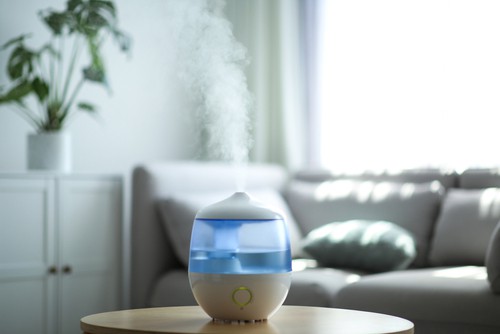
Begonias are sensitive to environmental factors, and white spots on their leaves can be a sign of stress due to unfavorable growing conditions. For instance, overwatering or overhead watering can lead to moisture buildup on the leaves, which can promote the growth of fungi and bacteria.
High humidity and wetting the leaves can also create a suitable environment for fungal growth. Low humidity, on the other hand, can cause the leaves to dry out and develop white spots.
In addition to the above factors, other environmental factors such as temperature, location, and lighting can also affect the health of begonia plants. Therefore, it is essential to provide the right growing conditions for begonias to prevent the formation of white spots on their leaves.
Effects of White Spots on Begonia
White spots on begonia leaves can be caused by various factors such as fungal infestations, pests, low light conditions, or excessive fertilization. While these spots may not always be harmful, they can have negative effects on the plant’s overall health and growth.
One of the most common effects of white spots on begonia leaves is stunted growth. The fungal infections or pests that cause these spots can damage the plant’s stem and foliage, leading to a reduction in the plant’s ability to absorb nutrients and water. As a result, the plant may not grow as tall or produce as many blooms as it would under normal conditions.
In addition to stunted growth, yellowing of the leaves is another common effect of white spots on begonia. As the fungal infection or pest infestation spreads, the leaves may turn yellow and eventually brown, causing the plant to lose its aesthetic appeal. This can be particularly problematic for indoor plants, where appearance is often a key factor in their placement.
Moreover, if left untreated, white spots on begonia leaves can lead to the death of the plant. Fungal infections, in particular, can spread quickly and cause irreparable damage to the plant’s internal systems. Therefore, it is important to take prompt action to prevent the spread of these spots and protect the plant’s overall health.
Prevention of White Spots
White spots on begonia leaves can be prevented by taking proper care of the plant. By following a few simple steps, you can keep your begonia healthy and prevent the appearance of white spots on its leaves. Here are some tips to help you prevent white spots on your begonia plant.
1. Proper Watering

Begonias require moderate watering. Overwatering can lead to root rot, while underwatering can cause the plant to dry out. It is important to keep the soil moist but not waterlogged. Water the plant when the top inch of soil is dry to the touch.
2. Appropriate Location
Begonias prefer bright, indirect light. Direct sunlight can scorch the leaves, while too little light can cause the plant to become leggy. Place your begonia in a location that receives bright, indirect light for most of the day.
3. Regular Pruning
Regular pruning is essential to keep your begonia healthy. Remove any dead or yellowing leaves as soon as you notice them. This will prevent the spread of disease and pests and help the plant focus its energy on producing new growth.
By monitoring your begonia regularly, you can catch any signs of disease or pests early on and take the necessary steps to prevent further damage. Proper ventilation is also important to prevent the buildup of moisture, which can lead to the growth of fungi and bacteria.
Treatment for White Spots on Begonia Leaves
When it comes to treating white spots on Begonia leaves, there are a few effective methods that can help prevent and eliminate the issue. In this section, we’ll discuss the three most common ways to treat white spots on Begonia leaves: fungicide application, organic remedies, and removal of infected leaves.
Fungicide Application
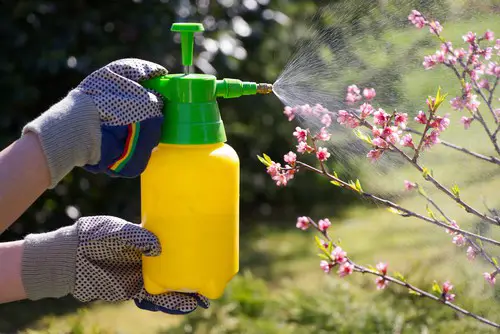
One of the most effective ways to treat white spots on Begonia leaves is to apply a fungicide. A fungicide is a chemical substance that can help prevent or eliminate fungal infections. To use a fungicide, follow the instructions on the label carefully.
It’s important to note that not all fungicides are created equal. Some fungicides may be more effective at treating white spots on Begonia leaves than others. It’s recommended to choose a fungicide that is specifically designed for treating fungal infections on Begonia plants.
Organic Remedies
If you prefer to use organic remedies to treat white spots on Begonia leaves, there are a few options that may be effective.
One popular organic remedy is baking soda. Mix one tablespoon of baking soda with one gallon of water and apply the solution to the affected leaves using a spray bottle. Repeat this process every seven days until the white spots disappear.
Another organic remedy is soapy water. Mix one tablespoon of mild dish soap with one gallon of water and apply the solution to the affected leaves using a spray bottle. Be sure to rinse the leaves with clean water after applying the solution.
Removal of Infected Leaves
If the white spots on your Begonia leaves are severe, it may be necessary to remove the infected leaves. This can help prevent the spread of the infection to other parts of the plant. Use clean, sharp scissors or pruning shears to remove the infected leaves. Be sure to dispose of the infected leaves in a sealed bag to prevent the spread of the infection.
Types of Begonias and Their Susceptibility to White Spots
Begonias are a popular houseplant and outdoor garden plant due to their beautiful foliage and flowers. However, one common issue that begonia plants face is white spots on their leaves.
These spots can be caused by various factors, including fungal infections, bacterial infections, and pests. Different types of begonias have varying susceptibility to white spots, and it is essential to understand which varieties are more prone to this issue.
1. Rex Begonias
Rex begonias are known for their stunning foliage, which comes in a wide range of colors and patterns. These plants are not particularly susceptible to white spots, but they can still be affected by fungal infections. To prevent white spots on rex begonias, it is crucial to avoid overwatering and ensure good air circulation around the plant.
2. Tuberous Begonias
Tuberous begonias are a popular variety that produces large, showy flowers in a range of colors. These plants are more susceptible to white spots than other types of begonias, particularly if they are grown in humid conditions. To prevent white spots on tuberous begonias, it is essential to ensure good air circulation and avoid overhead watering.
3. Fibrous Begonias
Fibrous begonias are a common variety that is often grown as a bedding plant or in containers. These plants are not particularly susceptible to white spots, but they can still be affected by fungal infections. To prevent white spots on fibrous begonias, it is crucial to avoid overwatering and ensure good drainage.
4. Other Varieties
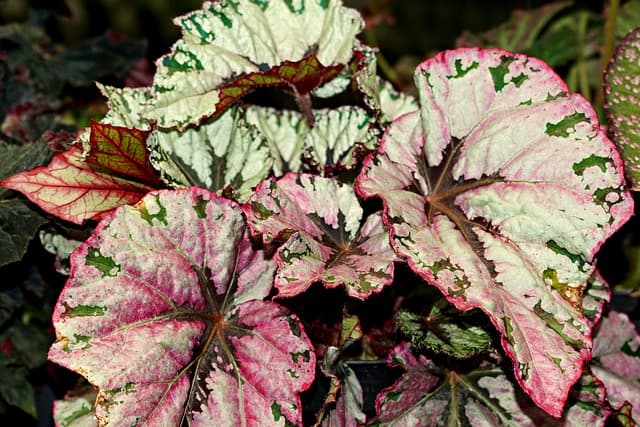
Other varieties of begonias, such as angel wing begonias and cane begonias, are also susceptible to white spots. These plants should be grown in well-draining soil and provided with good air circulation to prevent fungal infections.
Common Mistakes in Begonia Care
Begonias are a popular houseplant that can add a splash of color to any room. However, they are prone to a number of issues, including white spots on leaves.
While these spots can be caused by a variety of factors, including fungal infections and bacterial leaf spot, they can also be the result of common mistakes in begonia care. Here are some of the most common mistakes that people make when caring for their begonias:
1. Overwatering
One of the most common mistakes that people make when caring for their begonias is overwatering. Begonias require well-draining soil and do not like to be kept in standing water. When the soil is too wet, it can lead to root rot and other problems, including white spots on leaves.
To avoid overwatering, make sure to let the soil dry out between waterings. You can also use a moisture meter to help you determine when it’s time to water your begonia.
2. Underwatering
On the other hand, underwatering can also lead to white spots on begonia leaves. When the soil is too dry, it can stress the plant and make it more susceptible to diseases and pests.
To avoid underwatering, make sure to water your begonia regularly, but not too often. You can also mist the leaves with water to help increase humidity levels.
3. Temperature and Humidity
Begonias prefer warm, humid environments and can be sensitive to temperature changes. If the temperature drops too low or the humidity is too low, it can lead to stress and white spots on the leaves.
To avoid temperature and humidity issues, keep your begonia in a warm, humid location, such as a bathroom or near a humidifier. You can also use a thermometer and hygrometer to monitor the temperature and humidity levels.
4. Fertilization
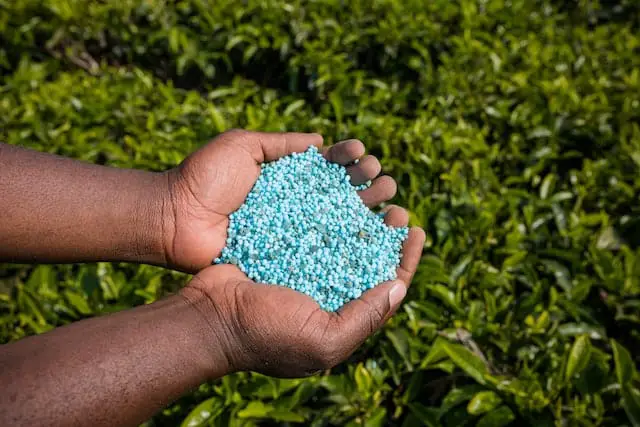
Overfertilization can also lead to white spots on begonia leaves. When the plant is given too much fertilizer, it can cause a buildup of salts in the soil, which can damage the roots and lead to stress.
To avoid overfertilization, make sure to follow the recommended fertilization schedule for your begonia. You can also use a fertilizer that is specifically designed for begonias.
5. Containers and Hanging Baskets
The container or hanging basket that your begonia is in can also affect its health. If the container is too small or does not have proper drainage, it can lead to overwatering and other problems.
To avoid container and hanging basket issues, make sure to choose a container that is the right size for your begonia and has proper drainage. You can also use a saucer to catch excess water and prevent it from sitting in the soil.
6. Garden Tools
Finally, using dirty garden tools can also lead to white spots on begonia leaves. If your tools are not properly cleaned and disinfected, they can spread diseases and pests to your plants.
To avoid using dirty garden tools, make sure to clean and disinfect them after each use. You can use a solution of one part bleach to nine parts water to disinfect your tools.
Begonia Diseases Similar to White Spots
White spots on begonia leaves can be caused by various diseases, including foliar nematode, stem rot, blight, pythium rot, bacterial leaf spot, rhizoctonia crown rot, and viruses such as mosaic.
Foliar nematodes are microscopic worms that can cause white or yellow spots on leaves. Infected leaves may become distorted and wilted. Unfortunately, there is no cure for foliar nematodes, and infected plants should be removed and destroyed to prevent the spread of the disease.
Stem rot is a fungal disease that can cause white spots on begonia leaves. The disease is caused by the fungus Sclerotium rolfsii and can cause the stem to rot at the soil line. Infected plants should be removed and destroyed, and the soil should be treated with a fungicide before replanting.
Blight is a bacterial disease that can cause white spots on begonia leaves. The disease is characterized by water-soaked lesions that can quickly spread and cause the leaves to wilt and die. Infected plants should be removed and destroyed, and the soil should be treated with a copper-based fungicide to prevent the spread of the disease.
Pythium rot is a fungal disease that can cause white spots on begonia leaves. The disease is characterized by soft, mushy stems and roots that can easily break. Infected plants should be removed and destroyed, and the soil should be treated with a fungicide before replanting.
Bacterial leaf spot is a common disease that can cause white spots on begonia leaves. The disease is characterized by water-soaked lesions that can quickly spread and cause the leaves to wilt and die. Infected plants should be removed and destroyed, and the soil should be treated with a copper-based fungicide to prevent the spread of the disease.
Rhizoctonia crown rot is a fungal disease that can cause white spots on begonia leaves. The disease is characterized by brown, sunken lesions that can quickly spread and cause the plant to wilt and die. Infected plants should be removed and destroyed, and the soil should be treated with a fungicide before replanting.
Viruses such as mosaic can also cause white spots on begonia leaves. The disease is characterized by yellow or white streaks on the leaves, and infected plants should be removed and destroyed to prevent the spread of the disease.
It is important to note that some diseases can have similar symptoms, so it is important to properly identify the disease before attempting to treat it. Additionally, prevention is key when it comes to begonia diseases, so proper sanitation and cultural practices should be followed to reduce the risk of disease.
Pests That Can Cause White Spots
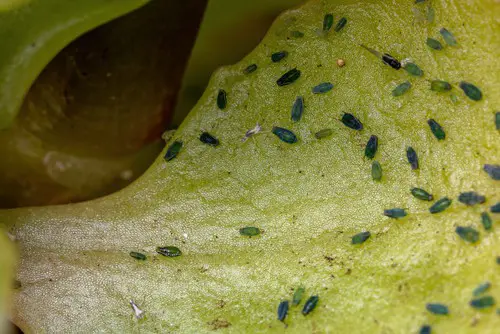
Begonias are susceptible to various pests that can cause white spots on their leaves. These spots can be a sign of a pest infestation, and it is essential to identify the pest to take appropriate measures to control it. Here are some pests that can cause white spots on begonia leaves:
1. Thrips
Thrips are tiny insects that feed on the sap of begonia leaves. These pests can cause white or silvery spots on the leaves, as well as distorted growth. Thrips can be challenging to control, and it is best to use insecticidal soap or neem oil to get rid of them.
2. Mealybugs
Mealybugs are another common pest that can cause white spots on begonia leaves. These pests are small, soft-bodied insects that suck sap from the leaves and stems. Mealybugs can be controlled by using insecticidal soap or neem oil.
3. Whiteflies
Whiteflies are small, winged insects that feed on the underside of begonia leaves. These pests can cause white spots on the leaves, as well as yellowing and stunted growth. Whiteflies can be controlled by using insecticidal soap or neem oil.
4. Nematodes
Nematodes are microscopic worms that can cause white spots on begonia leaves. These pests live in the soil and feed on the roots of the plant. Nematodes can be controlled by using diatomaceous earth or nematode-resistant varieties of begonias.
5. Slugs and Snails
Slugs and snails can also cause white spots on begonia leaves. These pests feed on the leaves and leave behind slime trails. Slugs and snails can be controlled by using slug and snail bait or by hand picking them off the plant.
Conclusion
White spots on begonia leaves can be caused by a variety of factors, including fungal and pest infestations, excessive fertilization, low light conditions, and environmental stresses.
Gardeners and growers should take care to avoid these issues by providing good ventilation, choosing the right location for their plants, disinfecting pruning tools, and monitoring their plants regularly.
If white powdery mildew is present on begonia leaves, gardeners can try watering down the leaves, making a home plant spray, or moving the infected plants to a greenhouse. Powdery mildew doesn’t usually kill plants, but it can cause poor growth if it becomes severe.
If the white spots are caused by disease attacks, growers can try removing affected leaves and treating the plant with a fungicide. Environmental stresses like high humidity and chemical exposure can also cause white to gray spots. In these cases, it’s important to remove the source of the stress and provide proper care to the plant.
Overall, taking good care of begonias is the best way to avoid white spots on their leaves. Whether growing them indoors or outdoors, gardeners and nursery owners should provide the right amount of light, water, and nutrients to keep their plants healthy and thriving.
With a little bit of knowledge and care, anyone can enjoy the beauty of begonias without worrying about unsightly white spots on their leaves.
Frequently Asked Questions
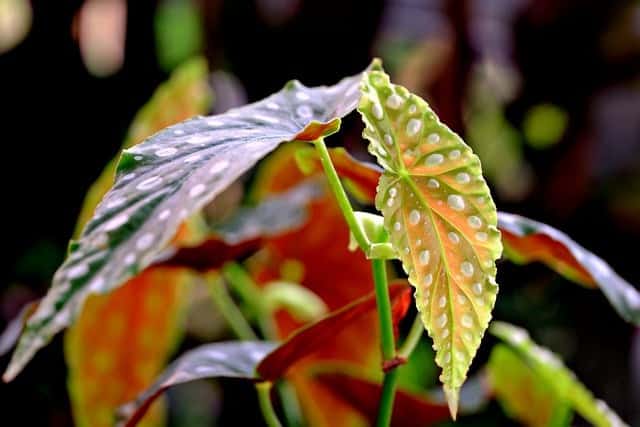
How do you get rid of powdery mildew on begonias?
Powdery mildew is a common fungal infection that causes white spots on begonia leaves. To get rid of powdery mildew, remove the infected leaves and isolate the plant to prevent the spread of the disease. You can also use fungicides to control the infection. Be sure to follow the instructions on the label carefully.
What are the best fungicides for treating begonias?
There are several fungicides that are effective in treating fungal infections on begonias. Some of the best options include neem oil, copper-based fungicides, and sulfur-based fungicides. Be sure to choose a product that is labeled for use on begonias and follow the instructions carefully.
What causes white spots on begonia leaves?
White spots on begonia leaves can be caused by a variety of factors, including fungal infections like powdery mildew and bacterial infections like bacterial leaf spot. In addition, environmental factors like sun scorching and water spots can also cause white spots on begonia leaves.
How do you treat bacterial leaf spot on begonias?
Bacterial leaf spot is a common bacterial infection that causes dark spots on begonia leaves. To treat bacterial leaf spot, remove the infected leaves and isolate the plant to prevent the spread of the disease. You can also use copper-based fungicides to control the infection.
What are some common diseases of polka dot begonias?
Polka dot begonias are susceptible to a variety of diseases, including powdery mildew, bacterial leaf spot, and begonia leaf spot. These diseases can cause white spots, dark spots, and other discolorations on the leaves.
What are some effective ways to treat begonia leaf problems?
To treat begonia leaf problems, it is important to identify the underlying cause of the issue. If the problem is caused by a fungal or bacterial infection, remove the infected leaves and use fungicides to control the infection. If the problem is caused by environmental factors like sun scorching or overwatering, adjust the growing conditions accordingly.

Hey, I’m Lisa and I’ve been an avid gardener for over 30 years. I love writing, talking and living in the garden! Feel free to connect with me on my socials below

